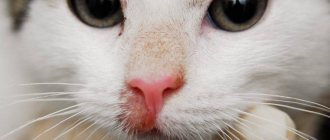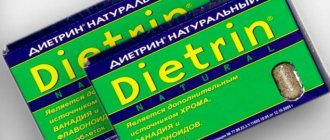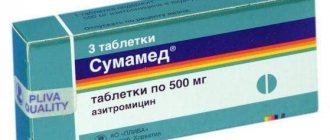With the development of new technologies, microorganisms harmful to health are also constantly being improved and require people to create more and more modern drugs to combat them, including in veterinary practice. But there are some exceptions. Thus, amoxicillin for cattle is still popular because it is both an affordable, safe and effective treatment for many bacterial infections, including their new varieties.
Form, composition
Suspension for injection from white to light yellow; During storage, separation of the suspension is allowed, which disappears when shaking.
| 1 ml | |
| amoxicillin trihydrate | 150 mg |
Excipients: butylated hydroxytoluene, anhydrous colloidal silicon dioxide, triglycerides of saturated fatty acids.
Packaged in 20, 50, 100 and 250 ml in glass bottles of appropriate capacity, sealed with rubber stoppers, reinforced with aluminum caps with tamper evident clips. Each consumer package is supplied with instructions for use.
Features of the drug from the manufacturers
Amoxicillin is produced by several pharmaceutical companies, the product of each of them has its own characteristics.
Invesa
Produced by a Spanish company in the form of a 15% solution of 100 ml. Used for the treatment of farm animals.
Nita Farm
Produced by a Russian company, it contains 100 ml of Amoxicillin 150. It is an inexpensive option with good quality.
KRKA
Produced by a Slovenian company, in the form of a 15% amoxicillin solution of 10 and 100 mg. The manufacturer offers a wide range of products.
Bioveta
Produced by a Czech company, 15% antibiotic solution with a volume of 100 cubic cm. Suitable for all types of animals.
Purpose, indications for use
Amoxicillin 15% is used in veterinary medicine:
- for the treatment of large and small cattle, pigs, dogs and cats with infectious diseases of the respiratory tract (rhinitis, pneumonia, bronchopneumonia), gastrointestinal tract (diarrhea, enteritis, colibacillosis, salmonellosis) and genitourinary system (cystitis, endometritis, metritis, vaginitis, leptospirosis), mastitis, lesions of the skin, soft tissues and hooves (necrobacteriosis, arthritis, abscess);
- as well as for the prevention of surgical postoperative infections caused by microorganisms sensitive to amoxicillin.
Price
You can now view the current price of the drug and buy it right here:
The price of Amoxicillin depends on the form of release and volume of packaging. Below are approximate prices from online pharmacies:
- tablets 20 pcs. – about 100 rubles;
- injection solution 10 ml – 200-260 rubles;
- injection solution 100 ml – 600-800 rub.
If the pharmacy does not have the drug you need, you can purchase one of their analogues. Several antibacterial agents containing the active ingredient amoxicillin are available.
Every year, completely new pathogenic microorganisms are born in the world, under the influence of which animals can be exposed to infectious diseases. Modern antibacterial drugs are used to treat them, one of which is amoxicillin. Unlike most other antibiotics, it copes well with infections, and is distinguished by its availability and safety in the treatment of animals. Following the instructions for use will help avoid adverse consequences.
Pharmacological properties
Amoxicillin 15% belongs to the antibacterial drugs of the group of beta-lactam antibiotics.
Amoxicillin trihydrate, which is part of the drug, has a wide spectrum of antibacterial action, is active against gram-positive and gram-negative microorganisms, including Escherichia coli., Salmonella spp., Pasteurella spp., Clostridium spp., Staphylococcus spp., Streptococcus spp., Haemophilus spp., Corynebacterium spp., Actinomyces spp., Bacillus anthracis, Erysipelothrix rhusiopathiae, Listeria monocytogenes, Pasteurella spp., Proteus mirabilis, Leptospira spp., Moraxella spp., Actinobacillus spp..
The mechanism of the bactericidal action of amoxicillin is to disrupt the synthesis of mucopeptide, which is part of the cell wall of microorganisms, by inhibiting the enzymes transpeptidase and carboxypeptidase, which leads to disruption of the osmotic balance and destruction of the bacterial cell.
Amoxicillin trihydrate is well absorbed from the injection site and is quickly distributed in the animal’s body, the maximum concentration of the antibiotic in the blood is reached 1-2 hours after administration of the drug and remains at a therapeutic level for 48 hours.
The antibiotic is excreted from the body mainly with urine and partly with bile, mostly in unchanged form.
Amoxicillin for cats: what is it for?
If you're wondering what amoxicillin is for cats, note that it is an antibacterial medication , so it helps fight bacterial infections .
In fact, amoxicillin is a well-known antibacterial drug . Besides humans, veterinarians often prescribe it to feline patients and other species that have contracted a bacterial infection because it is effective and safe, so it is very successful in making the infection go away.
This antibiotic belongs to the group of aminopenicillins , which are sometimes called ampicillins or penicillins.
The purpose of amoxicillin is to kill sensitive bacteria that are responsible for the cat infection. It eliminates a significant number of bacteria that need oxygen to live and reproduce, as well as those that do not, but it is not effective against any type of bacteria .
Amoxicillin for cats is used against a wide range of urinary, respiratory and ear infections or ear infections, as well as skin diseases (feline miliary dermatitis and pyoderma).
Instructions for use
The drug is administered to animals parenterally once at a dose of 1 ml per 10 kg of animal weight (15 mg of active substance per 10 kg of animal weight): large and small cattle, pigs, dogs - IM or s/c, cats - s/c. If necessary, the injection is repeated after 48 hours.
Before each use, the suspension should be shaken thoroughly.
The maximum volume of drug administration in one place should not exceed 20 ml for cattle, 10 ml for pigs, 5 ml for sheep, goats, calves, dogs.
No specific effects of the drug upon first use or discontinuation have been identified.
Amoxicillin 150 is usually used once. If it is necessary to re-administer the drug, the 48-hour interval should not be increased, because this may lead to decreased therapeutic efficacy.
Amoxicillin from Inves
The Spanish-made drug is used to treat diseases of large and small ruminants, as well as pigs. Amoxicillin 15 is administered intramuscularly with a dry syringe, because moisture inactivates the effect of the drug.
Secondary administration is carried out as necessary, two days after the first. Side effects are possible in case of personal hypersensitivity to the ingredients of the medicine.
The waiting time at slaughter is 14 days. If slaughter is forced, the meat is allowed to feed unproductive carnivores or to prepare meat and bone meal. Milk can be used for food after 48 hours. Otherwise, it goes to feed.
Amoxicillin from Biovet
A Czech-made veterinary drug is used in the treatment of diseases of large and small horned animals, pigs, and dogs.
Before use, shake the bottle and mix thoroughly.
Amoxicillin 15 is administered with a dry syringe 10 cm3/100 kg.
A second injection is allowed two days later. Side effects are observed with individual hypersensitivity.
You cannot inject >20 cm3 into one point. The injection site should be thoroughly massaged. If the cow weighs 600 kg, injections should be given at three points.
Sometimes swelling is recorded, which disappears spontaneously 1–2 days after the injection. When identifying signs of personal hypersensitivity, desensitizing agents are used - corticosteroids.
The waiting time for slaughtering cattle is 5 weeks, pigs - 4, milk for food use - 4 days. The previously obtained milk is boiled and fed to animals.
Amoxicillin from Nita Pharm
The veterinary product is intended for cattle, small ruminants, and pigs. Amoxicillin is administered intramuscularly or subcutaneously, 10 cm3/1 kg of mass.
Large ruminants are allowed to administer 20 cm3, small ruminants and calves - 5 cm3, pigs - 10 cm3 at one point. For an allergic response, desensitization therapy is used.
The waiting period for milk is 4 days, for meat - 4 weeks.
Amoxicillin from KRKA
The Slovenian company has adapted Amoxicillin for use in ruminants, pigs, cats and dogs. The medicine is administered intramuscularly or subcutaneously, at 24-hour intervals for 3–5 days.
The dosage is 0.7–1.1 g/100 kg live weight of ruminants, 70–150 mg/10 kg body weight of pigs, 7 mg/kg for a dog or cat.
The withdrawal periods for milk and meat repeat the parameters used for Russian-made Amoxicillin, and the requirements for storage conditions are the same as for.
Special Recommendations
When using Amoxicillin to treat cattle, animals should be slaughtered no earlier than 28 days after the last injection. If animals were forced to be killed before the expiration of this period, their meat can be used as food for predatory or fur-bearing animals.
When treating dairy animals with Amoxicillin, their milk is allowed to be used for food no earlier than 96 hours (4 days) have passed since the last use of the drug. Otherwise, it can be boiled and used to feed other animals.
Contraindications
Amoxicillin has virtually no contraindications, with the exception of individual intolerance to the drug in animals; if allergic reactions occur, the use of the drug should be stopped immediately and other treatment methods should be prescribed.
It is not recommended to administer this drug to rabbits, guinea pigs and hamsters; the drug is also contraindicated for hypersensitive animals and those with allergies to drugs containing beta-aminopropionic antibiotics.
It is not recommended to use the drug for the treatment of pregnant dogs, and it is strictly contraindicated for lactating bitches, as it penetrates the placental barrier, and the concentration in milk can be very high, which is dangerous for the offspring.
If, as a result of an infectious disease, the dog is at risk of death, then the puppies are transferred to artificial nutrition, and the animal is prescribed appropriate treatment.
Allergic reactions
These are the most common side effects to be aware of. After the bacteria die, all this biological mass will be excreted from the body through the kidneys and liver. In some cases, this phenomenon can cause the awakening of chronic diseases. That is, it is extremely important that the dosage of antibiotics is calculated individually, focusing on the age, weight and condition of the animal. In addition, it is necessary to use hepaprotectors and drugs that could relieve the load on the kidneys and liver.
Individual intolerance is another problem that you may encounter if you use antibiotics. In this case, complete withdrawal or replacement of the drug with a more gentle one is necessary. Allergic reactions may cause swelling, itching, baldness and skin rashes. In the most severe cases, you may experience difficulty breathing and anaphylactic shock. That is, in any case, the choice of drug, its dosage and course duration should be determined by the doctor.
Side effects
When using the drug in accordance with the instructions, side effects and complications, as a rule, are not observed. In rare cases, the animal may develop edema at the injection site, which resolves spontaneously within 1-2 days.
If the animal’s individual sensitivity to antibiotics of the penicillin group is increased and allergic reactions develop, the use of the drug is stopped and, if necessary, antihistamines and symptomatic therapy are prescribed.
Symptoms of drug overdose in animals may include depression, dysfunction of the gastrointestinal tract, and swelling at the injection site.
How to store the medicine
This antibacterial drug was developed by the Spanish pharmaceutical company Invesa. A penicillin antibiotic, it quickly dissolves in the injection area and begins to act after 2 hours. Its bactericidal properties are directed against pathogenic bacteria and microorganisms. The oily filler of the drug provides a long-term (up to 48 hours) effect of the antibiotic on the body, concentrating in the muscles, kidneys, liver and gastrointestinal tract.
Amoxicillin is almost not metabolized; it is completely eliminated from the body naturally. Thus, the drug is considered a safe remedy that is successfully used to treat:
- gastrointestinal diseases (gastroenteritis, gastroenterocolitis);
- respiratory organs (for rhinitis, bronchitis, pneumonia);
- disorders of the genitourinary system (cystitis, urethritis, pyelonephritis);
- diseases of the skin and joints;
- purulent inflammations, wounds;
- as well as for prevention after surgery (caesarean section, castration, sterilization, etc.).
Even a simple vitamin can cause side effects. In the case of amoxicillin, possible reactions:
- stomach upset;
- diarrhea;
- vomit;
- swelling;
- fever.
If your animal exhibits unusual symptoms after taking an antibiotic, you should seek help from a doctor.
Keep tablets and powders in a cool and dry place away from direct sunlight and moisture. An open bottle of suspension should be stored in the refrigerator
ATTENTION: after 2 weeks of storage, the drug is no longer suitable for use - it is discarded
The Spanish antibiotic is a truly effective modern remedy for treating four-legged pets from bacterial infections. Veterinary amoxicillin is used for cystitis in cats, in cases of diseases of the respiratory system, for wounds, immediately after surgery, for problems with the eyes or stomach, or sudden ill health.
Video on the topic
If you need to use amoxicillin with other medications, you should consult your veterinarian and read the instructions.
The drug enhances the effect of drugs that reduce blood clotting. Diuretics slow down the elimination of amoxicillin from the body, and its amount in the blood increases. With long-term use of both groups of drugs, you must be careful about the dosage.
Amoxicillin is an effective antimicrobial drug.
Reviews
According to customer reviews, the advantages of the drug include the following:
- The medicine is quickly absorbed after oral administration. It is absorbed into most animal tissues and fluids.
- The oily component allows the antibiotic to enter the bloodstream in a micronized state, thereby achieving a long-term effect on the animal’s body.
- In the case of treatment with amoxicillin injections, the medicine is quickly absorbed into the bloodstream, evenly distributed throughout the tissues of the body. The maximum concentration is achieved at the site of infection, be it an internal organ or muscle tissue.
- Most amoxicillin is excreted naturally in the urine.
general description
Most often, an antibiotic is used for dogs in the form of a suspension intended for intramuscular or subcutaneous injection. The outwardly white liquid is packaged in glass bottles, which are sealed with rubber stoppers and rolled up with aluminum lids to maintain tightness. The composition of the drug is based on amoxicillin in the form of trihydrate. Its concentration in the drug is 150 mg per 1 ml of suspension. It also contains an oily filler. It performs a special role - it ensures the long-term effect of the main component.
Note! You can store the medicine in an opened bottle for no more than 28 days. The antibacterial agent is also available in the following pharmacological forms:
The antibacterial agent is also available in the following pharmacological forms:
- Pills. May contain 0.25 and 0.5 g of active ingredient. The tablets are resistant to gastric juice and are quickly absorbed from the gastrointestinal tract.
- Powder for oral administration. The concentration of the active substance is 150 mg of amoxicillin per gram of powder. Packaged in polymer bags of various volumes - from 1 g to 1 kg.
The main active substance amoxicillin is a semisynthetic antibiotic of the penicillin series. Its main advantage is its wide spectrum of action. The drug is active against various gram-positive and gram-negative bacteria. These include:
- streptococci;
- staphylococci;
- salmonella;
- enterobacter;
- pseudomonas;
- erysipeloids;
- pasteurella;
- listeria, etc.
A complete list of bacteria against which Amoxicillin is effective when used in dogs can be read in the instructions included with the medication.
Personal prevention measures
When using Amoxicillin 150, you should follow the general safety rules for working with medications. While working with the drug, do not drink, smoke or eat; After finishing work, you should wash your hands thoroughly with soap.
People with hypersensitivity to the components of the drug should avoid direct contact with Amoxicillin 150.
In case of accidental contact of the drug with the skin or mucous membranes of the eyes, rinse immediately with plenty of water. If allergic reactions occur or if the drug accidentally enters the human body, you should immediately contact a medical facility (bring with you the instructions for use of the drug or the label).
Empty medicinal product packaging must not be used for household purposes; it must be disposed of with household waste.
Rules for working with the drug
To avoid complications, you must follow the storage instructions.
Personal safety equipment
The drug belongs to class B drugs (potent drugs) and should be prescribed with caution. Its oral or parenteral administration to humans is strictly prohibited. If liquid or powder accidentally gets on the mucous membranes, wash it off with running water.
Storage conditions and periods
The product must be kept in a cool place, protected from light. The shelf life is from 2 to 3 years. After opening, storage is allowed for 4 weeks. After this period, use is prohibited.











